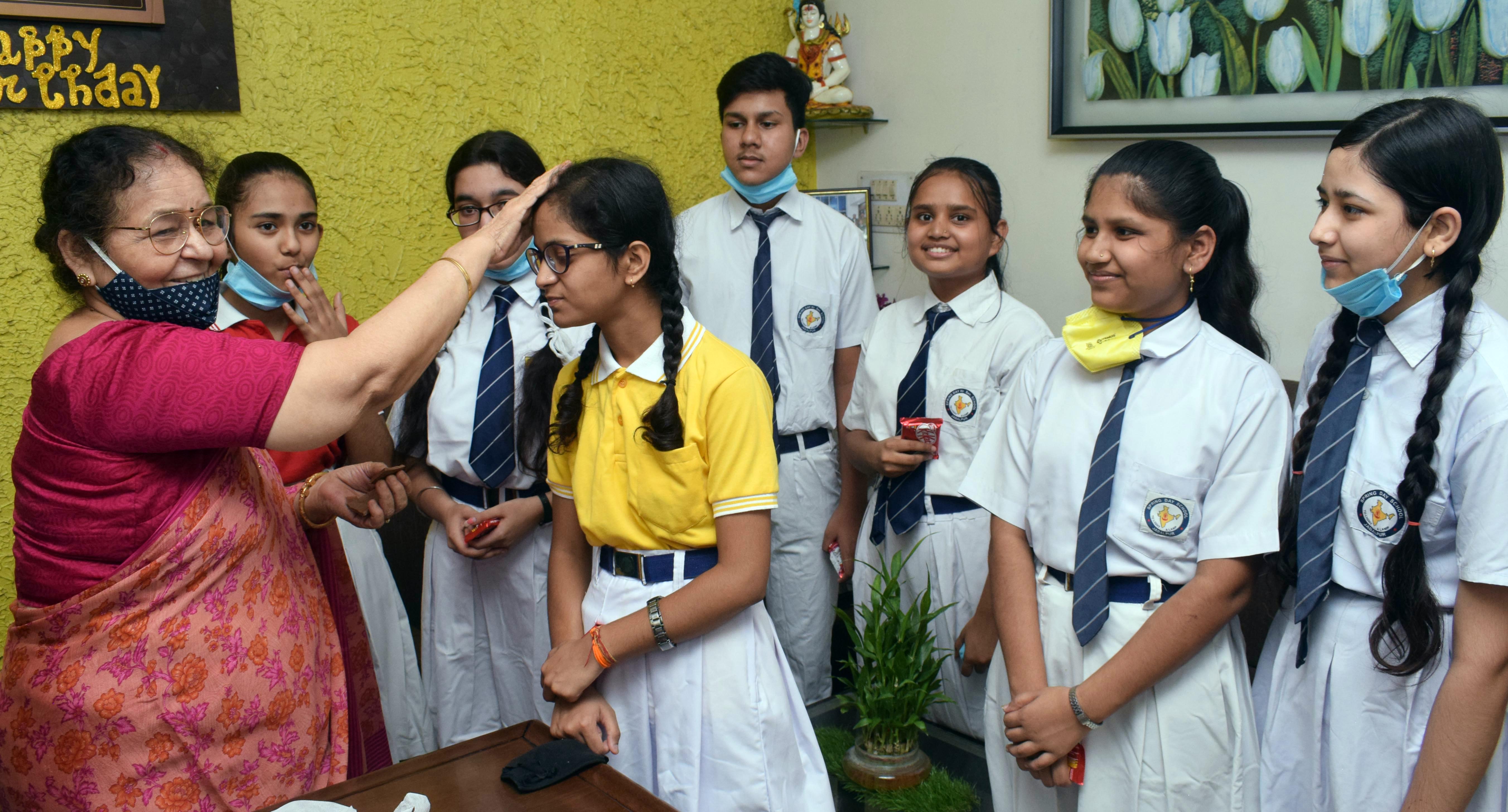Gender parity in higher education is now 1.0 and the Gross Enrolment Ratio of women exceeds that of men.
India’s focused efforts to include women in mainstream higher education has gained significant momentum over the last decade and achieved a notable milestone last year—in 2018-19, gender parity in the overall Indian higher education system reached 1.0 for the first time.
The gross enrolment ratio of women at 26.4 exceeded that of men at 26.3. Over the last eight years since MHRD (now Ministry of Education) has been tracking annual higher education (HE) indicators in detail via the All India Survey on Higher Education (AISHE), India has witnessed a steady increase in the number of women enrolling and graduating. It is noteworthy that this swift rise in women enrolment vis-à-vis men is a pan-India phenomenon—occurring across the country in all states and within every significant social group.
ALL MAJOR STATES ARE ENROLLING WOMEN AT HIGHER RATES
In total across the country, the number of women enrolled in 2018-19 was 1.81 crores—having sharply increased from 1.3 crores in 2011-12 at a compound annual growth rate (CAGR) of 5%. In the same period, men’s enrolment increased only from 1.61 crores to 1.92 crores at a CAGR of 2.5%—half of the women’s enrolment CAGR.
The phenomenon is pan-Indian—most states irrespective of region/zone are registering higher enrolment CAGRs for women compared to men. Table 1 analyses enrolment numbers and CAGRs for major states in four geographical areas of the country. The most striking difference is in the north-central zone—in Madhya Pradesh and Rajasthan, the enrolment CAGRs differ by a mountainous 5 points. The difference is more moderate in other north and central states of Uttar Pradesh and Punjab but distinct, nevertheless. Moreover, in both Uttar Pradesh and Punjab, the absolute number of women enrolled exceeds men’s enrolment.
In the eastern zone, too, the same phenomenon is observed. Jharkhand is reporting the highest CAGRs across India for both genders—10.4% for men and 11.7% for women. West Bengal’s women enrolment CAGR at 7.2% is more than double that of men at 3.1%. Odisha has almost the same CAGR for both—3.87% and 3.81%. Irrespective of how bleak Bihar’s HE base seems to be where hardly 12% of the state’s large young population is enrolled in HE, women’s enrolment at 3.9% is higher than men’s enrolment at 2.3%.
In the southern states as well, female enrolment CAGRs are higher than male. Male enrolment CAGRs are below 1.25%, whereas female enrolment CAGRs are closer to 3%. It appears enrolment in southern states is stabilising. Karnataka and Telangana have more women enrolled than men. Telangana has a negative 1.6% male enrolment CAGR. Western states like Maharashtra and Gujarat have higher enrolment CAGRs than southern states, for both men and women. Here too, women’s enrolment CAGR’s are higher than men, consistent with the rest of the country (Table 1).

2011-12 And 2018-19. Source: Aishe
[* data from 2012-13 used for AP and Telangana instead of 2011-12, CAGR adjusted accordingly]
The clear trend of women enrolling at higher rates than men is not just a state phenomenon; it is also occurring across social groups, as demonstrated in Table 2.
Six-year growth rates of women enrolment within the Scheduled Caste (SC) community exceeded that of men’s at 7.9% vs 5%. Similarly, women enrolment within the ST community, at 9.5%, is three points higher than men’s at 6.2%. Within the Other Backward Castes (OBC) community too, women’s enrolment at 7.6% is higher than men at 5.2%.
Enrolment rates for women within the Muslim community are growing the fastest in India at 8.7%—more significant than for any other group and gender in India. For other minority communities, the rates are almost the same—7.8% for men vs 7.1% for women. Using these enrolment numbers for communities and back-calculating for general enrolment, a most startling observation comes to fore. Enrolment rates for men in general category are declining at a rate of (-)1.6%, while women’s enrolment in that category is only growing at 0.9%. It seems the reservation system is yielding results.


CONCLUSION
All citizens in India, irrespective of gender, region or community, now recognise higher education as an aspirational lever of socio-economic mobility. Women across India—be they in developed or underdeveloped states and various social groups—are enrolling in higher education with unambiguous aspirations. India has successfully mainstreamed gender in higher education.
As India’s gross enrolment ratio climbs to 50 from 26.3, if these trendlines continue, soon there will be more women graduating from college than men in absolute numbers. This is already the case in states like Uttar Pradesh and Punjab. It is imperative that the country’s leadership—at the Centre, state and administration levels—plan to onboard all this valuable human and intellectual capital into the workforce so women may find gainful employment in their respective states and communities. Harnessing this untapped potential will be vital to driving India’s next wave of economic growth.
T.V. Mohandas Pai is Chairman, Aarin Capital Partners and Nisha Holla is Technology Fellow, C-CAMP.

